Housebroken: Confessions of a Stay-at-Home Dad
David Eddie
Once, David Eddie was a freewheeling comic novelist. Then, after years of slow-roasting in Bachelor Hell, Mr. Eddie met Ms. Right-who delivered an ultimatum on her thirtieth birthday: "Fertilize my eggs within the next three years, or pack your bags."
Housebroken is the shocking true story of one man's painfully funny evolution from single cad to stay-at-home dad-from man-about-town to man-of-the-house. In his own words, Eddie describes how a bachelor who never kept anything in the fridge but condiments and beer actually learns to cook for the whole family. In vivid detail, he shows how a man who let ashtrays flow over and dishes stack up for months on end can miraculously clean the house. In charge of a child, he comes up with logical reasons why every parent should rope-a-dope the kid. And within a three-block radius of his house, he somehow manages to find adventure.
1573223344
Bad Cat: 244 Not-So-Pretty Kitties And Cats Gone Bad
Jim Edgar
Not since Kliban has there been a cat book this edgy. Edgy as in Bosco, the demonic Siamese with the out-of-focus eyes, razor-sharp fangs, and his own idea of Feng Shui. Or the half-shaved freak named Mr. Fliegel, who looks like a cross between a poodle and a lion. Mr. Fliegel shrugs and says, "Chicks dig me." Or Kato, resplendent in his Three Musketeers outfit: "One for all, blah blah blah . . . now just get me out of this @#%&#%&ing costume!" Or Clark, whose hobby is eating other cats' food. Tina, who somehow always just misses the litter box . . . sucker. And the guilty-looking Clarence, caught with a Barbie doll in flagrante delicto. Clarence's defiant defense: "She was naked when I came in. . . ."
Just as Kliban got us to think about the cat as something far more interesting than an innocuous house pet, and Suzy Becker taught us that cats possess a Buddha-like wisdom (together Cat and All I Need to Know I Learned from My Cat have more than 2.6 million copies in print), Jim Edgar reveals yet another facet of the ever-mesmerizing animal. Brooding, deranged, antisocial, these are kitties with attitude and borderline personality problems—ah, but what hilarious fun it is to read about them. All 244 photographed in terrifying full color in their most unflattering moments, with a quote plus vital stats: name, breed, age, and hobby. Get to know them. Then see if you can ever forget them.
0761136193
The Best American Magazine Writing 2004
American Society Of Magazine Editors
In the magazine world, no recognition is more highly coveted than an "Ellie," presentedby the American Society of Magazine Editors. Selected from thousands of submissions, the pieces in this anthology represent the very best of those — outstanding works by some of the most eminent writers in America:
Laura Hillenbrand (Seabiscuit) on living and creating with chronic fatigue syndrome
Dave Eggers (A Heartbreaking Work of Staggering Genius) on love and surfing
Mark Bowden (Black Hawk Down) on modern torture and the "landscape of persuasion"
Seymour M. Hersh (Chain of Command) on the "selective intelligence" used by the White House to justify the war in Iraq
Calvin Trillin (The Tummy Trilogy) on his favorite force of nature, the newsman R. W. Apple, Jr.
Tucker Carlson (CNN's Crossfire), the "whitest man in America," on a peace mission with Rev. Al Sharpton
And many more!
0060749539
Vogue Knitting: The Ultimate Knitting Book
Vogue Knitting Magazine Editors
With input from more than 50 leading specialists, no other book covers the field so comprehensively. Need guidance on yarns, needles, tools, basic techniques, specialized applications, terminology? It’s in here—with lots more, from diagnostics to blocking to designs. “This indispensable reference has...up-to-the-minute designer patterns.”—Family Circle Homecrafts. “The ultimate reference guide.”—House & Garden Magazine.
193154316X
Cat Care
Andrew Edney, David Taylor
Know-how in a nutshell.
The step-by-step series that brings expert advice at an affordable price. Gives quick answers to all questions. Each point can be absorbed in an instant.
1564589862
|
Adios, Barbie: Young Women Write About Body Image and Identity
Ophira Edut
The breezy, irreverent essays in Adios, Barbie are a welcome antidote to the narrow cultural consciousness the tiny doll has fostered for more than 40 years. While thousands of little girls worship Barbie's plasticine perfection, those who wind up dissatisfied with the message she sends—be white, be skinny, be stacked, be pretty, and then you'll be loved—can tell you how a toy skews body image in the real world. Among whites talking trash about blacks and upwardly mobile black folks, notes Erin J. Aubry, big butts are suspect——"low-class and ghettoish," the antithesis of Barbie's tightly tucked derriere. Yet on good days, Aubry applauds her ample proportions, for "unlike hair or skin, the butt is stubborn, immutable—it can't be hot-combed or straightened or bleached into submission. It does not assimilate; it never took a slave name."
In "Fishnets, Feather Boas, and Fat," Nomy Lam—a 250-pound, 22-year-old disabled woman—and friends elbow their way to the front of a determinedly different club, "dancing like fiends toward revolution." Lee Damsky tells us why her mother's model of scientific prowess took a dusty third-place to big-screen images of "beauty and femininity [that] seem to offer me absolute power rivaled only by a fascist dictatorship." Because the various writers gathered together here are young, their conceits and world-views are sometimes annoyingly unexamined; by the same token, though, their energy, heckling, and bone-deep assurance make large and pleasing dents in mainstream assumptions. —Francesca Coltrera
1580050166
One Last Time: A Psychic Medium Speaks to Those We Have Loved and Lost
John Edward
Looking back, John Edward now sees the early signs that he was destined to become an acclaimed psychic and medium. "There were times when I knew things I shouldn't have known," he writes. "Simple things like who was coming over, or who was on the phone." He knew events in family history that no one had told him about. He was inexplicably fascinated with television characters that possessed supernatural powers. He'd see auras around schoolteachers and hear voices that whispered true information in his mind. Eventually his gifts expanded into hearing the names of spirits "who'd gone to the other side." Finally, as a teenager Edward began to claim rather than question his psychic abilities and committed his life work to pursuing and learning about his gifts. Now that he has become a renowned medium (appearing on numerous talk shows, including Larry King Live), Edwards has written an entertaining "my life as a psychic" type of autobiography, packed with fascinating true stories. At the same time, Edward offers an engaging self-help book, teaching readers how to visit a medium and even showing seekers how they can recognize and develop their own psychic abilities. —Gail Hudson
0425166929
A Heartbreaking Work of Staggering Genius
Dave Eggers
Dave Eggers is a terrifically talented writer; don't hold his cleverness against him. What to make of a book called A Heartbreaking Work of Staggering Genius: Based on a True Story? For starters, there's a good bit of staggering genius before you even get to the true story, including a preface, a list of "Rules and Suggestions for Enjoyment of This Book," and a 20-page acknowledgements section complete with special mail-in offer, flow chart of the book's themes, and a lovely pen-and-ink drawing of a stapler (helpfully labeled "Here is a drawing of a stapler:").
But on to the true story. At the age of 22, Eggers became both an orphan and a "single mother" when his parents died within five months of one another of unrelated cancers. In the ensuing sibling division of labor, Dave is appointed unofficial guardian of his 8-year-old brother, Christopher. The two live together in semi-squalor, decaying food and sports equipment scattered about, while Eggers worries obsessively about child-welfare authorities, molesting babysitters, and his own health. His child-rearing strategy swings between making his brother's upbringing manically fun and performing bizarre developmental experiments on him. (Case in point: his idea of suitable bedtime reading is John Hersey's Hiroshima.)
The book is also, perhaps less successfully, about being young and hip and out to conquer the world (in an ironic, media-savvy, Gen-X way, naturally). In the early '90s, Eggers was one of the founders of the very funny Might Magazine, and he spends a fair amount of time here on Might, the hipster culture of San Francisco's South Park, and his own efforts to get on to MTV's Real World. This sort of thing doesn't age very well—but then, Eggers knows that. There's no criticism you can come up with that he hasn't put into A.H.W.O.S.G. already. "The book thereafter is kind of uneven," he tells us regarding the contents after page 109, and while that's true, it's still uneven in a way that is funny and heartfelt and interesting.
All this self-consciousness could have become unbearably arch. It's a testament to Eggers's skill as a writer—and to the heartbreaking particulars of his story—that it doesn't. Currently the editor of the footnote-and-marginalia-intensive journal McSweeney's (the last issue featured an entire story by David Foster Wallace printed tinily on its spine), Eggers comes from the most media-saturated generation in history—so much so that he can't feel an emotion without the sense that it's already been felt for him. What may seem like postmodern noodling is really just Eggers writing about pain in the only honest way available to him. Oddly enough, the effect is one of complete sincerity, and—especially in its concluding pages—this memoir as metafiction is affecting beyond all rational explanation. —Mary Park
0375725784
The Best American Nonrequired Reading 2002
Dave Eggers
Since its inception in 1915, the Best American series has become the premier annual showcase for the country's finest short fiction and nonfiction. For each volume, a series editor reads pieces from hundreds of periodicals, then selects between fifty and a hundred outstanding works. That selection is pared down to the twenty or so very best pieces by a guest editor who is widely recognized as a leading writer in his or her field. This unique system has helped make the Best American series the most respected — and most popular — of its kind.
The Best American Nonrequired Reading 2002 is a selection for young people of the best literature from mainstream and alternative American periodicals: from the New Yorker, Jane, Rolling Stone, Zyzzyva, Vibe, The Onion, Spin, Epoch, Time, Little Engines, Modern Humorist, Esquire, and more. Dave Eggers has chosen the highlights of 2001 for this genre-busting collection that includes new fiction, essays, satire, journalism — and much more. From Eric Schlosser on french fries to Elizabeth McKenzie on awful family to Seaton Smith on how to "jive" with your teen, The Best American Nonrequried Reading 2002 is the first and the best.
0618246940
What Is the What
Dave Eggers
What Is the What is the epic novel based on the life of Valentino Achak Deng who, along with thousands of other children—the so-called Lost Boys—was forced to leave his village in Sudan at the age of seven and trek hundreds of miles by foot, pursued by militias, government bombers, and wild animals, crossing the deserts of three countries to find freedom. When he finally is resettled in the United States, he finds a life full of promise, but also heartache and myriad new challenges. Moving, suspenseful, and unexpectedly funny, What Is the What is an astonishing novel that illuminates the lives of millions through one extraordinary man.
0307385906
The Best American Nonrequired Reading 2003
Zadie Smith and Dave Eggers
Since its inception in 1915, the Best American series has become the premier annual showcase for the country's finest short fiction and nonfiction. For each volume, the very best pieces are selected by an editor who is widely recognized as a leading writer in his or her field, making the Best American series the most respected — and most popular — of its kind.
Dave Eggers, who will be editing The Best American Nonrequired Reading annually, has once again chosen the best and least-expected fiction, nonfiction, satire, investigative reporting, alternative comics, and more from publications large, small, and on-line — The Onion, The New Yorker, Shout, Time, Zoetrope, Tin House, Nerve.com,and McSweeney's, to name just a few. Read on for "Some of the best literature you haven't been reading . . . And it's fantastic. All of it." (St. Petersburg Times).
Lynda Barry
Jonathan Safran Foer
Lisa Gabriele
Andrea Lee
J. T. Leroy
Nasdijj
ZZ Packer
David Sedaris
0618246967
Nickel and Dimed: On (Not) Getting By in America
Barbara Ehrenreich
Essayist and cultural critic Barbara Ehrenreich has always specialized in turning received wisdom on its head with intelligence, clarity, and verve. With some 12 million women being pushed into the labor market by welfare reform, she decided to do some good old-fashioned journalism and find out just how they were going to survive on the wages of the unskilled—at $6 to $7 an hour, only half of what is considered a living wage. So she did what millions of Americans do, she looked for a job and a place to live, worked that job, and tried to make ends meet.
As a waitress in Florida, where her name is suddenly transposed to "girl," trailer trash becomes a demographic category to aspire to with rent at $675 per month. In Maine, where she ends up working as both a cleaning woman and a nursing home assistant, she must first fill out endless pre-employment tests with trick questions such as "Some people work better when they're a little bit high." In Minnesota, she works at Wal-Mart under the repressive surveillance of men and women whose job it is to monitor her behavior for signs of sloth, theft, drug abuse, or worse. She even gets to experience the humiliation of the urine test.
So, do the poor have survival strategies unknown to the middle class? And did Ehrenreich feel the "bracing psychological effects of getting out of the house, as promised by the wonks who brought us welfare reform?" Nah. Even in her best-case scenario, with all the advantages of education, health, a car, and money for first month's rent, she has to work two jobs, seven days a week, and still almost winds up in a shelter. As Ehrenreich points out with her potent combination of humor and outrage, the laws of supply and demand have been reversed. Rental prices skyrocket, but wages never rise. Rather, jobs are so cheap as measured by the pay that workers are encouraged to take as many as they can. Behind those trademark Wal-Mart vests, it turns out, are the borderline homeless. With her characteristic wry wit and her unabashedly liberal bent, Ehrenreich brings the invisible poor out of hiding and, in the process, the world they inhabit—where civil liberties are often ignored and hard work fails to live up to its reputation as the ticket out of poverty. —Lesley Reed
0805063897
|
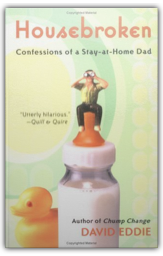
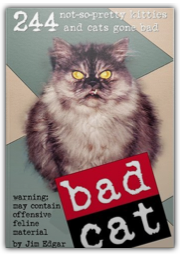
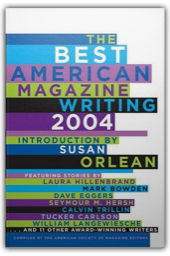
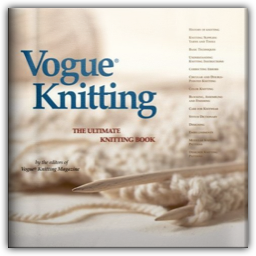
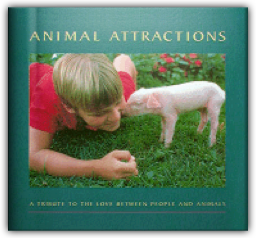
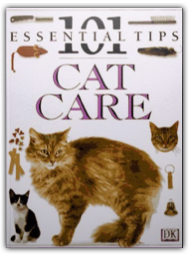

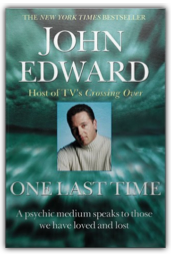
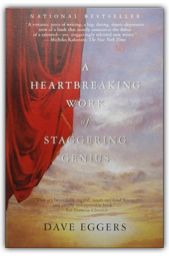
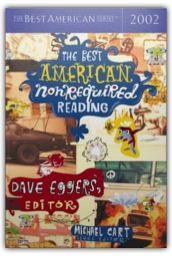
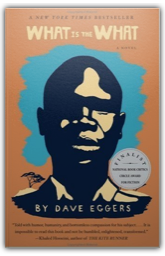
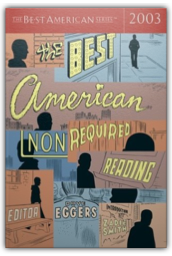
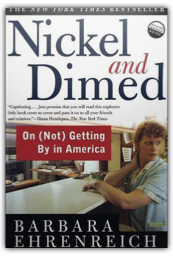


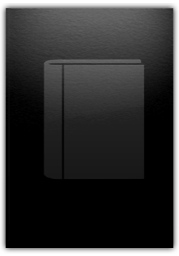
 Made with Delicious Library
Made with Delicious Library